
Gyrfalcon Falco rusticolus, Lubbock, Texas on January 25, 2002 by Martin Reid.
Found by Anthony Floyd on January 21st; all these (cropped) photos
were taken using an SLR emulsion camera hand-held to my telescope;
the upper images were shot through some branches, hence the areas
of fuzziness:
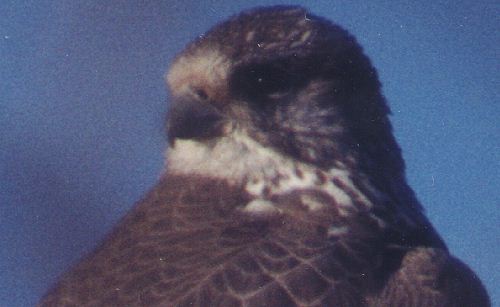
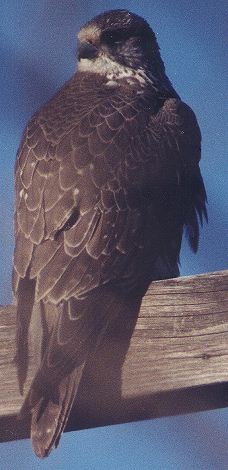
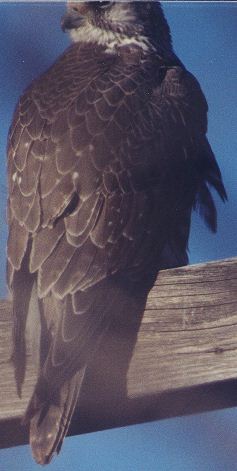
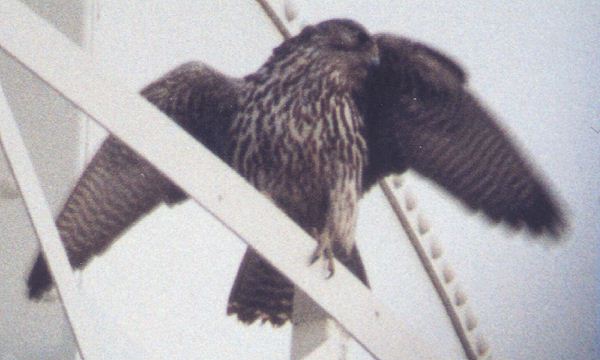
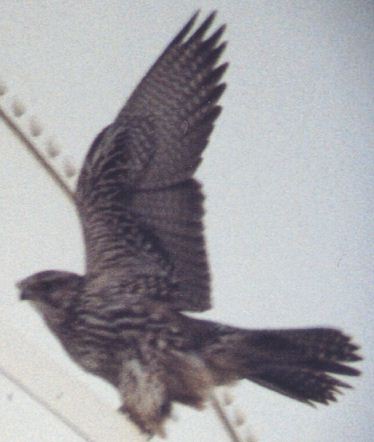
my one slight concern while taking photos of the bird, was the
degree of wear on some tail feathers:
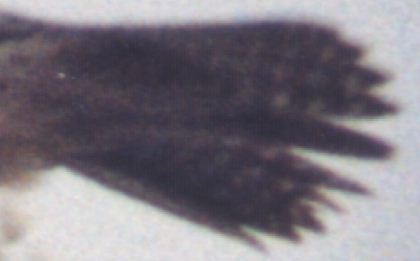
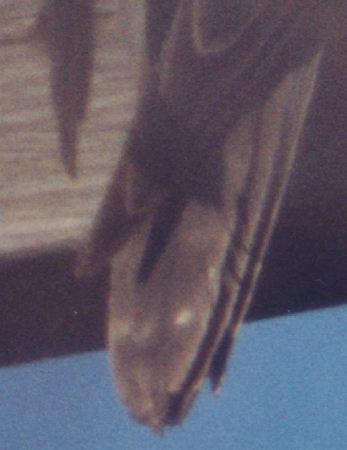
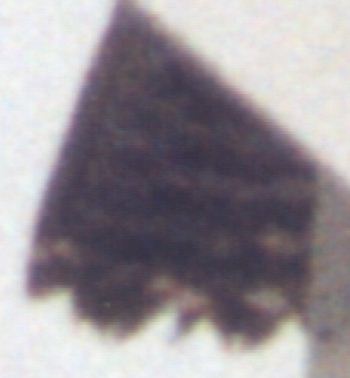
- but a dip into my library showed that juvenile birds can and
do show quite a lot of wear on the tail:- here are three examples
lifted from BIRDING
WORLD magazine; if the photographer wants me to remove any
image, please email me:
1) Dick Forsman, Lapland, July 1991 ("Identification of large
falcons: Gyr Falcon", Dick Forsman, BW vol 6 number 2, p66-72):
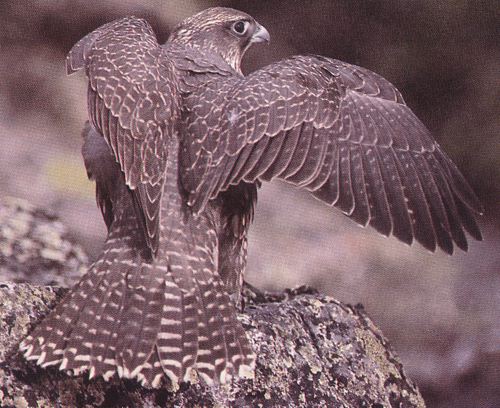
- note that the tip-sides of 3 or 4 retrices on the left side
are already fraying by July:
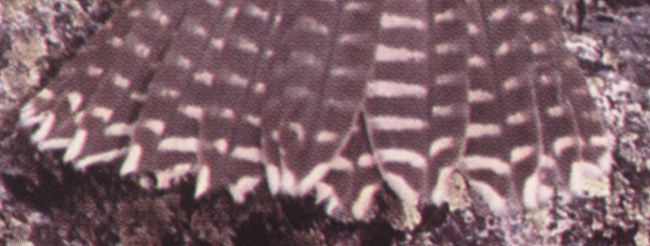
2) Axel Halley, Germany, November 1989 (Identification forum:
large falcons", Steve Gantleet and Richard Millington, BW
vol 5 number 3, p101-106):
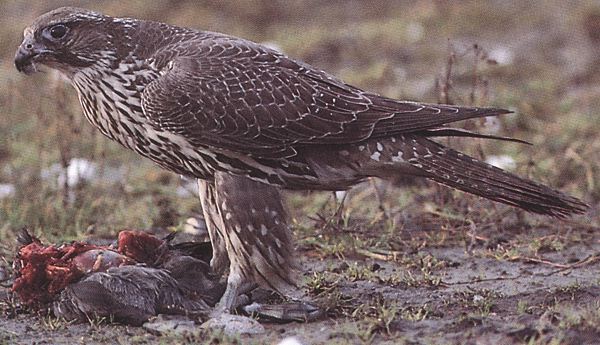
- note that this individual has similar tail-wear to the Lubbock
bird by November:
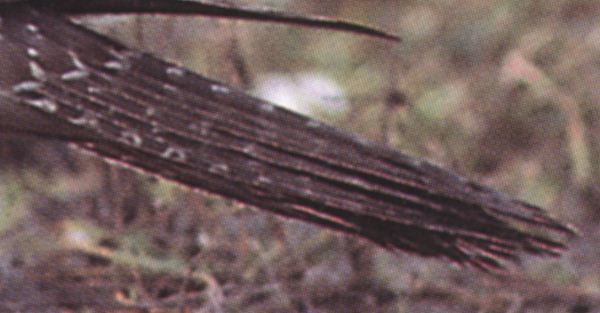
3) George Reszeter, England, March 2000 ("Gyr Falcons in
February and March 2000", Steve Gantlett, BW vol 13 number
3, p104-107):
Note here not only the wear on the tail of this white-morph juvenile,
but also the position of the wing tips compared to the tail tip;
it seems that Gyrs are able to sit in such a way that the normal
long tail projection can disappear....
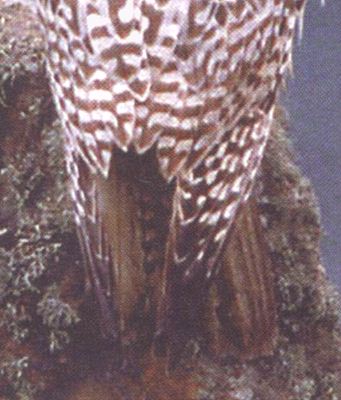
Brian K.Wheeler has commented: " "Wear" on the
tail would signify that the bird has - as do most juvenile raptors
that are "ground feeders" - broken tips on the retrices
because the tail is used as a brace when tugging at meat. This
is seen on juvenile Prairie Falcons and Ferruginous Hawks. The
tail is braced on the ground and used for leverage when pulling
at flesh chunks. This is especially true in windy areas, for the
bird to retain balance. Much of the tail tip can be broken off.
As said previously, all plumage details point towards a juvenile
(female) Gyr. The underwing pattern of course is the most accurate.
Only a very pale Saker Falcon has a underwing pattern simlar to
a Gyr, but Sakers have very defined, thin dark malar strip (mustache).
Darker Sakers, similar to this Gyr, have all-dark leg feathers,
not streaked as on a Gyr, and very dark underwing coverts. See
Forsman (1999) and Clark (1999).
There is nothing on this bird that suggests hybridizing with a
Saker.
Also as noted, virtually all Gyr sightings in the US are of females,
and juveniles are likely to extend farther south than adults."